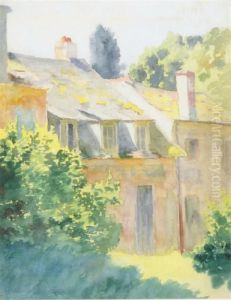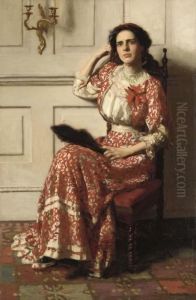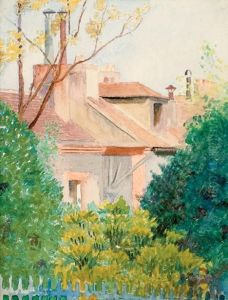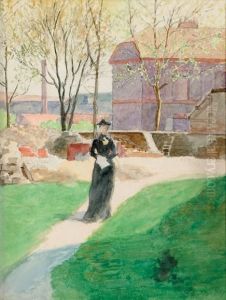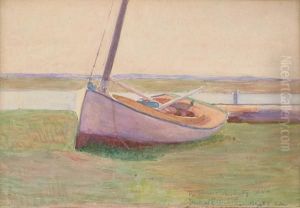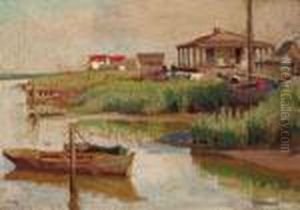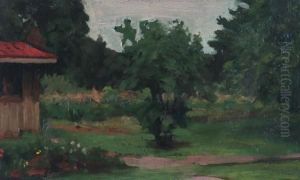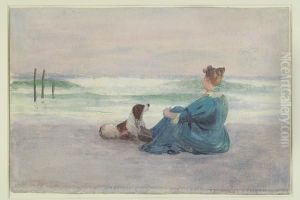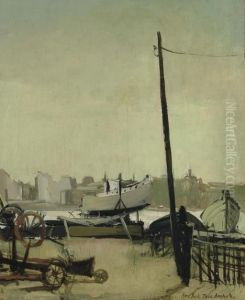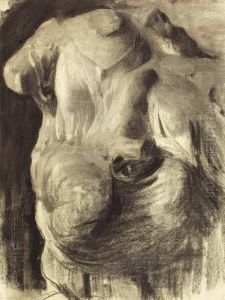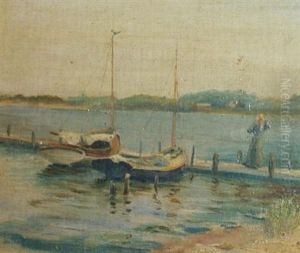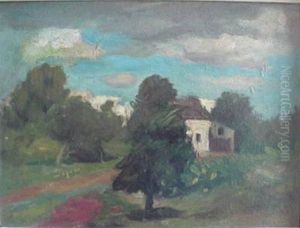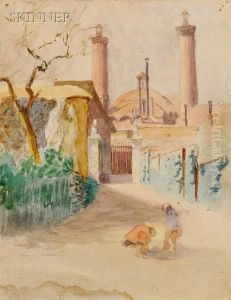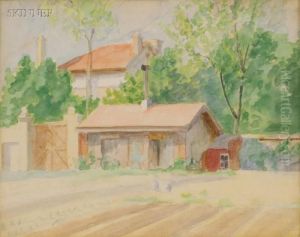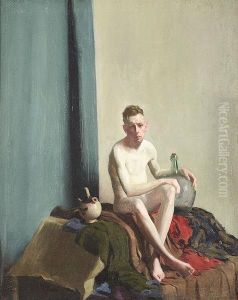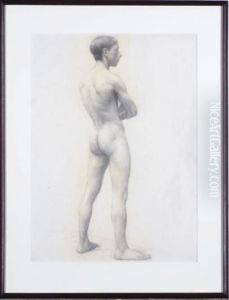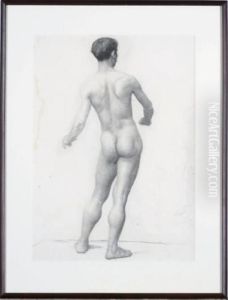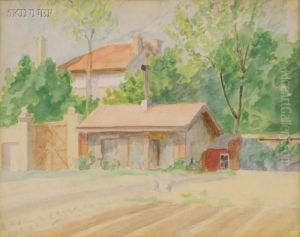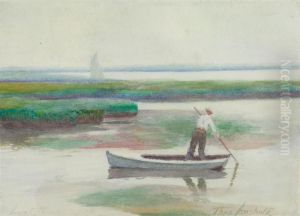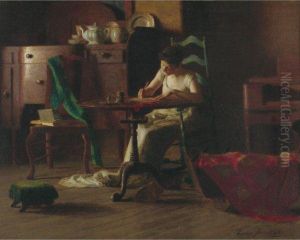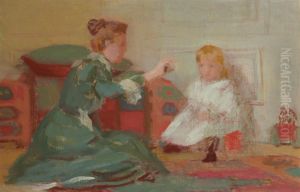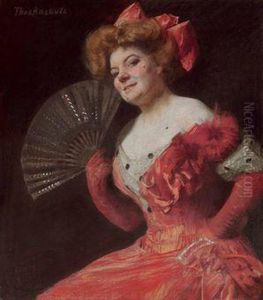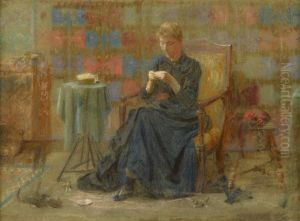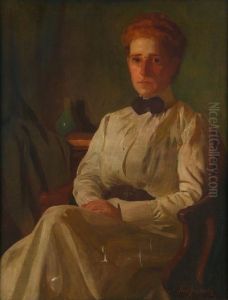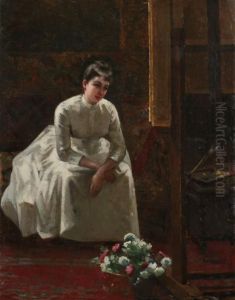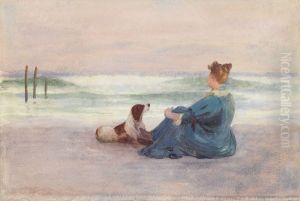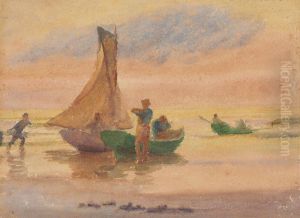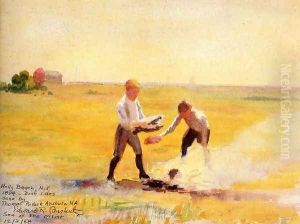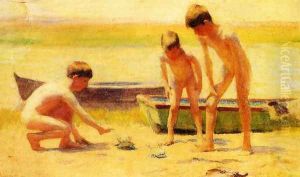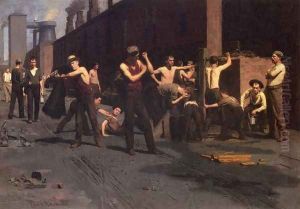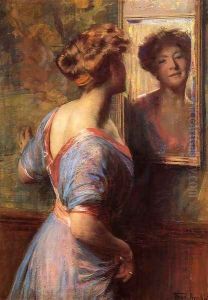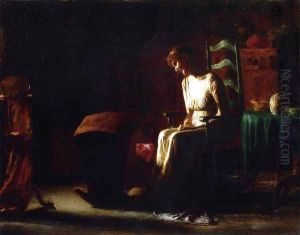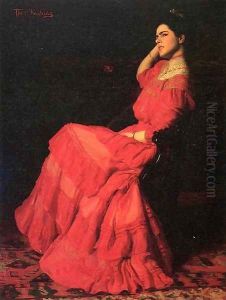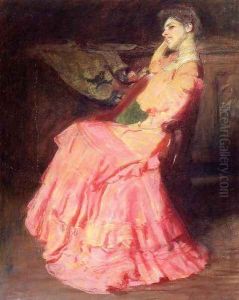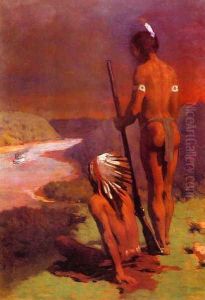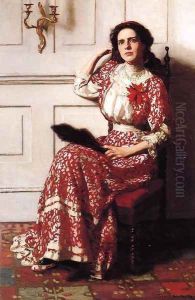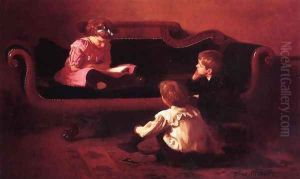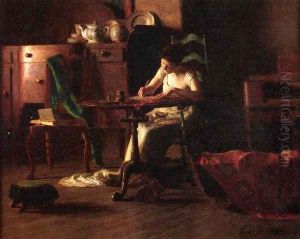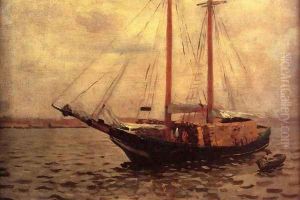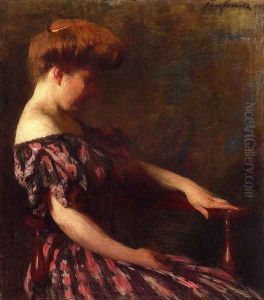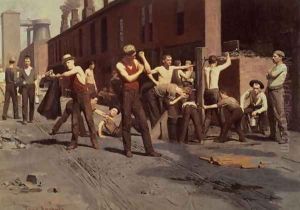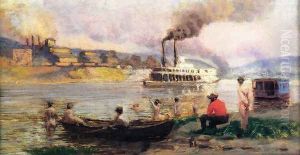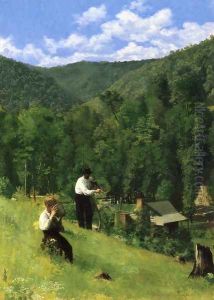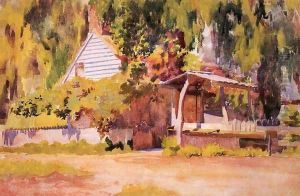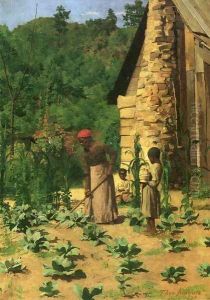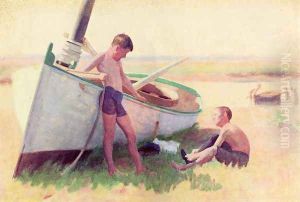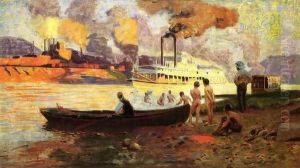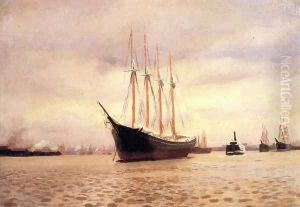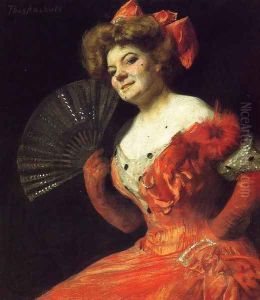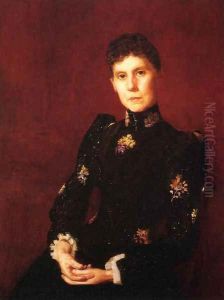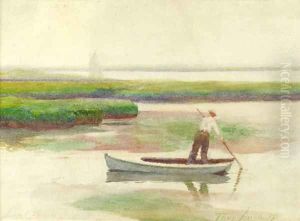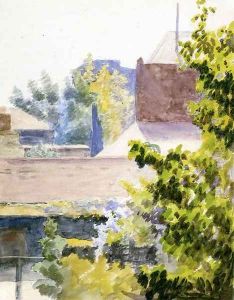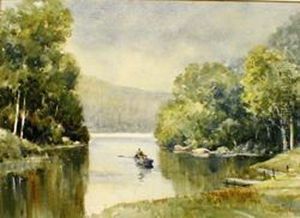Thomas Pollock Anschutz Paintings
Thomas Pollock Anshutz was an American painter and teacher. Born on October 5, 1851, in Newport, Kentucky, Anshutz grew up in Newport and Wheeling, West Virginia. He studied art under Thomas Eakins at the Pennsylvania Academy of the Fine Arts (PAFA) in Philadelphia, where he later became an instructor himself. Anshutz's work as an artist and teacher left a significant impression on the development of American art during the late 19th and early 20th centuries.
A realist painter, Anshutz is known for his portraits and genre scenes that often depicted the everyday life of Americans in the post-Civil War era. His style, which incorporated influences from Eakins, focused on the accurate representation of form and the use of light and shadow to create depth.
In 1886, Anshutz became an instructor at PAFA, where he played a pivotal role in the education of future American artists. He took over Eakins's classes after Eakins was dismissed for his controversial teaching methods. Anshutz was less controversial than his predecessor, but he continued to emphasize the importance of anatomical accuracy and the study of the human figure, which became hallmarks of the Pennsylvania Academy.
One of his most well-known works is 'The Ironworkers' Noontime,' an 1880 painting that is considered one of the finest examples of American realism. It depicts a group of workers taking a break from their work at a foundry in Wheeling, West Virginia, and reflects Anshutz's interest in portraying the lives of working-class Americans.
Beyond his contributions as an artist, Anshutz also helped found the Philadelphia Sketch Club, which was an important gathering place for artists in the region. He influenced many students, including Charles Demuth and Charles Sheeler, who would go on to play major roles in the American modernist movement.
Thomas Pollock Anshutz's commitment to teaching and his realistic portrayal of American life left a lasting impact on the art world. He continued to teach at PAFA until his death on June 16, 1912, in Fort Washington, Pennsylvania. His legacy is preserved through his paintings and the generations of artists he influenced.
